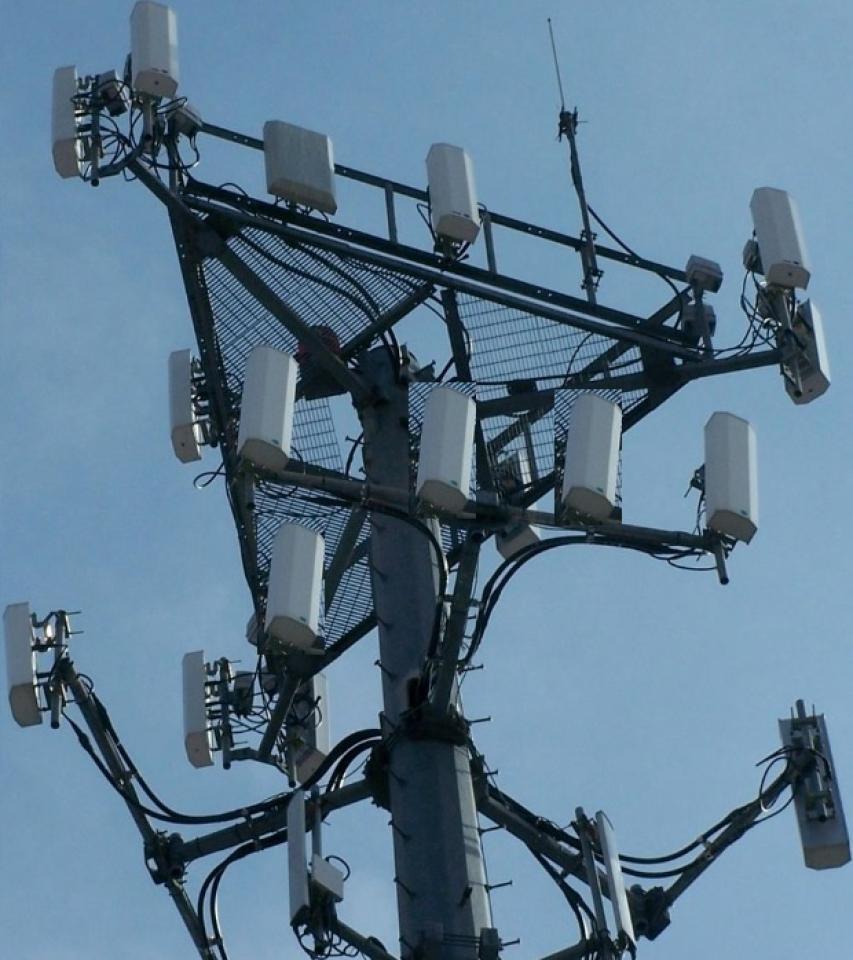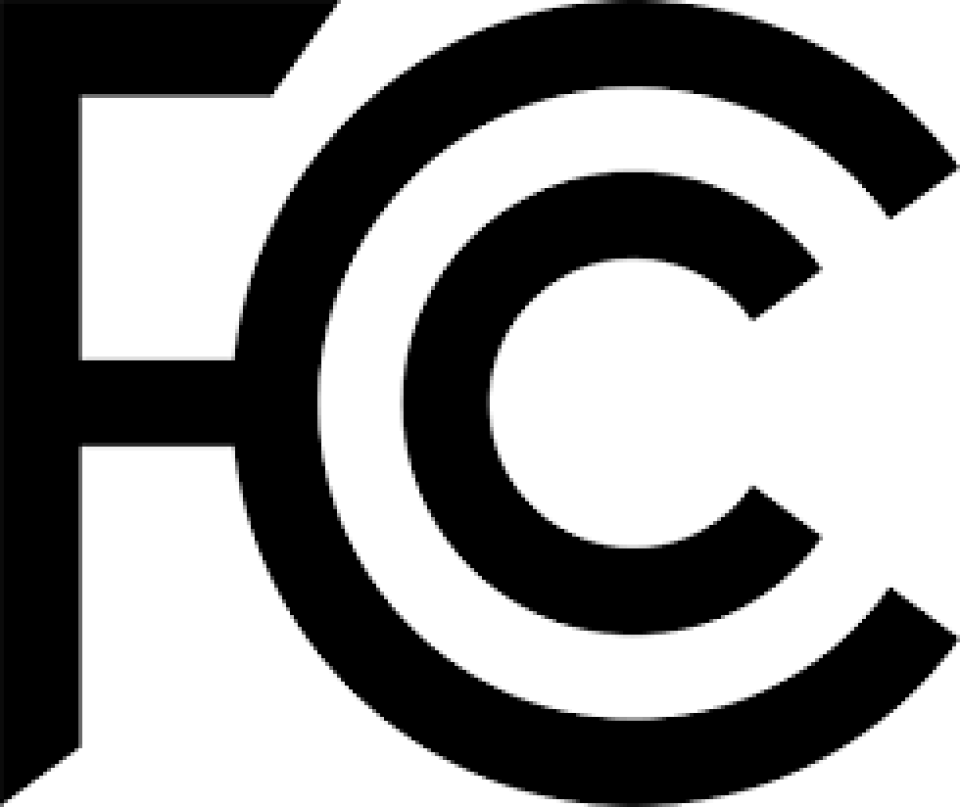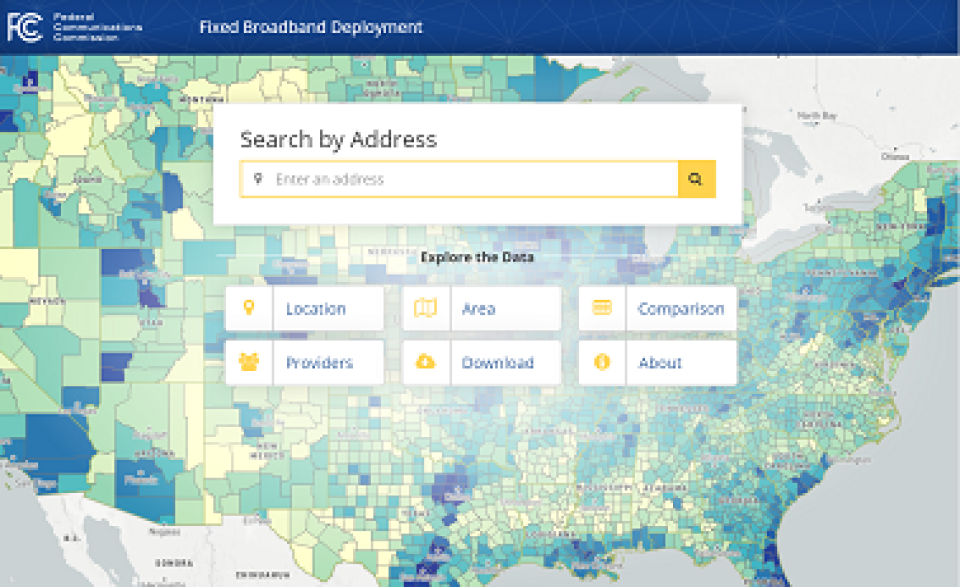
Fast, affordable Internet access for all.

Last week, House Republicans introduced a bill package ostensibly to promote broadband expansion and competition across the country. In reality, the legislation is a wish list of monopoly cable and telephone companies that will protect them from competition and decrease their accountability to the public. It would also ban communities from building their own networks or engaging in public-private partnerships.
A Rights of Way Free-for-All
About a third of the bills in the Boosting Broadband Connectivity Agenda would preempt regulations (including application timelines and fee schedules) set by government subdivisions on wireless deployment. The major mobile carriers are already in the process of slowly rolling out 5G networks which will require the installation of hundreds of thousands of small-cell sites over the next several years. AT&T spent more than $23 billion on the recently concluded 3.7 GHz C-band auction, with T-Mobile spending $9.3 billion. Verizon outspent every other bidder combined at $45 billion. Establishing shorter shot clocks and maximum fees for the installation of new hardware in public Rights of Way would simultaneously reduce the income municipalities receive and lead to the proliferation of poles and attachments across the country with limited public input. We’ve already seen how it has negatively impacted cities like Milwaukee and Tucson.

If you have been following our series on the Accessible, Affordable Internet for All (AAIA) Act, you already know the proposed legislation calls for a $100 billion investment in expanding broadband access and affordability in unserved and underserved parts of the country. In this fourth installment of the series, we explore the part of the bill that contains the bulk of the funding. Of the $100 billion proposed in the bill, $85 billion of it can be found in the Title III - Broadband Access section.
Amending the Communications Act of 1934, Section 3101 of the bill appropriates $80 billion for “competitive bidding systems” to subsidize broadband infrastructure. That is to say, it requires the Federal Communications Commission (FCC), and states, to use “competitive bidding systems” for Internet Service Providers (ISPs) to bid on broadband deployment projects in “areas with service below 25/25 Megabits per second (Mbps), and areas with low-tier service, defined as areas with service between 25/25 and 100/100 Mbps.” The term “competitive bidding” seems to suggest a reverse auction process, though it hardly makes sense for each state to set up such a system given the logistical challenges. A legislative staffer responded to our email earlier this year saying he believed that language would allow for state programs that solicited applications from ISPs and scored them for evaluation, much like Minnesota’s Border-to-Border Broadband program operates. However, he noted that the FCC would interpret that language ultimately. More on this below.
Prioritizing Higher Upload Speeds

Without good information from Internet Service Providers (ISPs), the federal government is essentially shooting in the dark when it comes to determining how to best target the allocation of resources for underserved and unserved communities. Even private sector investments are less efficient because of the lack of good data about broadband availability and pricing. That’s why the second major section of the Accessible, Affordable Internet for All Act (AAIA), currently languishing in the U.S. Senate, aims to address the nebulous nature of broadband data at the Federal Communications Commission (FCC).
In this third installment of our series on the AAIA, we explore the ”Title II – Broadband Transparency” section of the Act, which requires the FCC to adopt rules to gather accurate and up-to-date information from ISPs about broadband service plan prices and subscription rates. It also requires the FCC to collect data that will allow the federal government to assess the resiliency of the nation’s broadband network in the event of a natural disaster or emergency.
Better Data is Needed
Anyone who closely follows FCC news is already familiar with the problems associated with the agency’s broadband coverage maps, which most experts agree overstate actual broadband coverage. Though recent studies indicate there may be as many as 41 million people who lack access to fixed broadband in the United States that meets minimum speed of 25/3 Megabits per second (Mbps), the FCC claims that number is closer to 18 million. It’s a big discrepancy with big dollar implications, as the coverage maps are the basis upon which agencies and states make major funding decisions.
Last week we began our broad overview of the Accessible, Affordable Internet for All Act, sweeping legislation that calls for a $100 billion investment in broadband infrastructure in unserved and underserved parts of the country, as well as federal funding and coordinated support to meet the myriad of barriers that prevent tens of millions of Americans from having access to affordable and reliable Internet connectivity.
The bill (H.R. 7302) has already passed in the U.S. House of Representatives led by House Majority Whip James E. Clyburn (D-SC) and members of the House Rural Broadband Task Force. The Senate version of the bill (S. 4131), which was filed by Minnesota Senator Amy Klobuchar, co-chair of the Senate Broadband Caucus, has stalled, thanks to Senate Majority Leader Mitch McConnell who has “has buried the legislation in his graveyard,” in the words of Rep. Clyburn.
In this second-installment of a series of posts exploring the major sections contained in the proposed legislation, we look at the “Title I – Digital Equity” portion of the bill.

New Office of Internet Connectivity and Growth (OICG)
As House GOP leaders ask the Government Accountability Office to audit the U.S. Department of Agriculture (USDA) ReConnect program because of concerns federal funds are being used to “overbuild,” Democratic leaders in the House and Senate have filed legislation that aims to build broadband infrastructure on a national-scale.
The Accessible, Affordable Internet for All Act is a bill that harkens back to when the federal government – through FDR’s Rural Electrification Administration, established in 1935, and the Rural Electrification Act, passed by Congress in 1936 – invested in local cooperatives and brought electricity to the abundance of Americans still living in candle-lit homes without electrically-powered refrigerators.
The proposed legislation may well frame the Democratic agenda on broadband moving forward, as the Biden administration enters the White House in January. It’s a bold bill that has garnered the support of a who’s-who of broadband experts and advocacy organizations from Public Knowledge, the National Consumer Law Center and New America Foundation’s Open Technology Institute to the Benton Institute for Broadband and Society, the Electronic Frontier Foundation, and the National Digital Inclusion Alliance.
Breaking it Down
There’s a lot to unpack in this bill, which is why we are publishing a series of posts exploring the major sections contained in the proposed legislation. This first installment is the 30,000-foot view. Forthcoming posts will examine the legislative details where the devil – or the better angels – can be found.

Yesterday, Congresswoman Deb Haaland and Senator Elizabeth Warren introduced the DIGITAL Reservations Act, a bill which ends the current Federal Communications Commission (FCC) practice of selling wireless spectrum rights on the lands of Indian Tribes and Native Hawaiian organizations and grants ownership, management, and governance of all spectrum to those groups in perpetuity. The bill also calls for the creation of an FCC fund to support broadband efforts, an advisory team to provide regulatory and technical assistance, and a data collection program to support future connectivity efforts in those communities. It represents a dramatic new approach to addressing the digital divide in Tribal communities, which remain among the least well-connected of all across the United States today.
Breaking Down the Bill
The Deploying the Internet by Guaranteeing Indian Tribes Autonomy over Licensing on Reservations Act [pdf] offers significant investment in a multi-pronged approach. It’s driven by twin impulses. From the bill:
To date, the [Federal Communications] Commission has failed to implement nationwide spectrum opportunities or uniform licensing for Indian Tribes and Native Hawaiian organizations to make spectrum available over their Tribal lands or account for the unmet needs of native Nations in compliance with the Federal trust responsibility.
The Commission’s actions parallel failed Federal Reservation Era policy that divided Indian land holdings and created systemic barriers to Indian Tribes’ economic development and legal jurisdictional complications on Tribal lands that continue to disadvantage Tribal communities today.
Update 7/7/20:
The U.S. House of Representatives passed the Moving Forward Act, which includes the Accessible, Affordable Internet for All Act, on Wednesday, July 1. The bill is currently in the Senate, where Majority Leader Mitch McConnell has announced his opposition to the legislation, calling it "pointless political theater," and saying, "this nonsense is not going anywhere in the Senate."
Original article:
Earlier this week, Democrats in the U.S. House of Representatives introduced the Accessible, Affordable Internet for All Act, a sweeping bill that would take major steps toward closing the digital divide.
We reported on the legislation yesterday, but today we want to take a closer look at the bill text [pdf]. Below, we examine some details of how the act would fund broadband deployment and affordable connections for Americans across the country.
Grand Plans to Build Broadband, Connect the Unconnected
Among the investments proposed in the Accessible, Affordable Internet for All Act, the largest is $80 billion to fund the construction of broadband networks in unserved and underserved areas. That amount dwarfs the Federal Communications Commission’s (FCC’s) upcoming $20.4 billion Rural Digital Opportunity Fund (RDOF).
Update 7/7/20:
The U.S. House of Representatives passed the Moving Forward Act, which includes the Accessible, Affordable Internet for All Act, on Wednesday, July 1. The bill is currently in the Senate, where Majority Leader Mitch McConnell has announced his opposition to the legislation, calling it "pointless political theater," and saying, "this nonsense is not going anywhere in the Senate."
Original article:
Yesterday, representatives in the U.S. House introduced the Accessible, Affordable Internet for All Act, which calls for the federal government to invest $100 billion to ensure all Americans have access to affordable, high-quality Internet access — a need that has been exacerbated by the ongoing Covid-19 crisis.
The proposed legislation would fund broadband deployment in unserved and underserved areas and provide affordable home Internet access, among other measures meant to reduce the digital divide in both rural and urban communities. It would also remove state restrictions on community-owned broadband networks.
“This bill is an historic effort to address all the causes of our persistent digital divide,” said Angela Siefer, Executive Director of the National Digital Inclusion Alliance, in a statement.
Contact your House representative this week to ask them to support the Accessible, Affordable Internet for All Act and to sign on as a cosponsor. Find your representative and their contact information using this online search tool. Keep reading for more details on the legislation and a short example of what you can say to your representative.
"A Major Leap" Toward Connecting Everyone
At the end of 2019, Congress passed the Revitalizing Underdeveloped Rural Areas and Lands (RURAL) Act, fixing a tax law change that threatened to raise rates and delay the expansion of broadband for rural cooperative members across the country.
Passage of the RURAL Act ensures that cooperatives can accept federal funds for broadband deployment, disaster relief, and other efforts without risking their nonprofit tax exempt status. A change in the 2017 tax law would have labeled these funds as revenue for the first time, potentially causing co-ops to exceed the allowable percentage of non-member income they must maintain to remain tax exempt.
After Senators Tina Smith (D-Minn.) and Rob Portman(R-Ohio) and Representatives Adrian Smith (R-) and Terri Sewell (D-Ala.) introduced the bipartisan bill in April, it attracted 55 additional cosponsors in the Senate and more than 300 in the House. It was eventually incorporated into the consolidated appropriations act and signed into law in December.
“Obstacles From the Federal Government”
We described the possible impact of the 2017 tax law change on rural cooperatives over a year ago, when Senator Smith first brought the issue to our attention.
Failure to remedy it would have forced some co-ops to choose between continuing with desperately needed broadband and disaster recovery projects and increasing their members’ rates. Northwestern Electric Cooperative CEO Tyson Littau described the difficulty of that decision to the National Rural Electric Cooperative Association (NRECA):
Do we rebuild and try to strengthen our distribution system and pay the taxes, or do we delay the mitigation project that would improve 1,200 miles of line throughout our territory? I think we have a responsibility to the membership to improve the system for the future.
As federal, state, and local leaders increasingly recognize the need to make Internet access universal, they are also realizing that adoption is a separate issue. Programs such as the ReConnect and Connect America Funds I and II Auction have helped to expand infrastructure, but even in places where Internet access has been available for years, 100 percent of households do not subscribe. In an effort to better understand digital equity, the House Subcommittee on Communications & Technology of the Committee on Energy and Commerce recently sat down to listen to experts on digital equity. They discussed common misconceptions, hurdles that make wide-scale adoption difficult, and offered policy recommendations to help us achieve digital equity.
Not Only a Rural Problem
Angela Siefer, Executive Director of the National Digital Inclusion Alliance (NDIA) described how her experience as a digital equity warrior has changed from working with people to learn the basics of computer use to the additional problem of helping people get online. Angela's statement addressed some of the most common myths associated with the digital divide that NDIA, through boots-on-the-ground research, has discovered, including:
The digital divide is a rural problem: Census results show that populations in urban areas do not have Internet access subscriptions of any kind; these are often low-income households.
5G will bridge the digital divide: Lack of infrastructure and devices deployed in areas where existing problems with digital inclusion continue with regards to this new technology.
People don't subscribe because they don't think the Internet isn't valuable: Accomplishing day-to-day tasks often require access to the Internet, which is a fact not lost on those who don't subscribe, but the cost is out of reach for many of those same people.